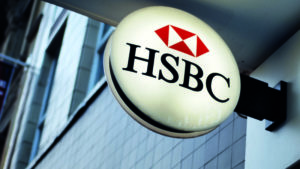By Felix Wintle, manager of the VT Tyndall North American fund
Passive investing has become a key part of the investing landscape for many investors, particularly for those looking for US exposure.
These vehicles have been a great solution for many in recent years, but it is important to remember that not all passive funds have performed as well as the S&P 500 ETF, and this is why it is critical to be fully aware of what stocks they hold and what their weightings are.
Passives are sold as low risk, diversified strategies, but is that still the case today?
The S&P 500, as we all know, is very weighted towards mega cap growth stocks, and this is why ETFs have done so well in recent years. But its weighting profile is so concentrated at the top of the market that 485 of the 500 stocks in the index have a weighting of less than 1%.
That means if you are buying an S&P 500 index tracker today, you are banking on just 15 companies to deliver your returns, as the rest of the companies in the tracker have too low a weight to have a discernible impact on returns. And those 15 companies are already household names, with market caps already in the trillions.
They have already been great performers – including of course the so-called Magnificent Seven. So, given the S&P 500 index tracker is not as diversified as it would seem, investors should ask themselves two questions: how ‘low risk’ is it to have so much exposure to just seven stocks, and what happens when these stocks start to underperform?
We are beginning to see that underperformance already. It has been brought about by two things – a downturn in fundamentals and better opportunities elsewhere.
When we look at the top of the market, the underperformance culprits are Apple, Alphabet and Tesla. Apple is now the second biggest company in the index, but it has been flat to down in price terms for several quarters now.
See also: LSEG report: Most active funds are underperforming their benchmarks
Part of the reason for this is the deceleration in growth; last quarter it managed to eke out 2% top line growth after several quarters of negative revenue growth. The stock has been underperforming the S&P 500 since the end of June 2023.
Tesla has also been underperforming, peaking versus the index back in December 2021. It has suffered from new competition and been forced to cut prices to make up for over-production.
The Magnificent Seven has therefore become Magnificent Five, and with recent bad news coming out of Alphabet concerning their AI platform, a Magnificent Four is perhaps on the horizon.
With Apple and Tesla both having problems in their core businesses, investors are looking forward and are now realising that these companies are not well positioned in terms of the new secular themes, most notably AI. There are simply better places to have your money and that is what the weakness in these two stocks is telling us.
So, what of the broader market indices? Are these a better bet in terms of diversified, low risk exposure?
The Russell 2000 is probably the best known of the truly ‘broad market’ indices, yet this index suffers from being too broad.
One of its biggest sectors is financials, which has been one of the worst sectors performance wise for some years. Although there has been some better performance since the October lows, banks have not been a good place to be invested.
The regional banks are now being hit by concerns over their commercial real estate (CRE) loan books, and the New York Community Bank has fallen 67% since January when it reported a big earnings miss driven by its increased provisioning for loan losses in its office portfolio.
See also: Ocorian: Compliance issues causes loss for 81% of alternative fund managers in three years
On the same day, Aozora Bank – a Japanese bank with large exposure to US CRE – announced it too would be taking big write downs and that in many US cities, its loan to value (LTV) ratios were well north of 100%.
These concerns around CRE have been percolating for 18 months to two years now and companies are finally having to admit the real condition of their loan books.
We do not know which bank will be next to report a problem or when, and although most regional banks have already reported their numbers for the first quarter, this is yet another cloud for this sector to deal with. And this is the big positive for active managers, who can see a problem and can avoid a whole sector that is under stress.
Passive investors do not have this flexibility. If you are buying a Russell 2000 tracker today, you are investing directly into this very risky sector.
Investors also need to remember that index trackers have the biggest weightings in the leaders of the last cycle. Because those companies have such big market caps, they will remain the biggest weightings until underperformance forces them out of the top ten, as has recently happened to Tesla.
Tracker funds are stuck with these stocks and if they underperform, the index too will suffer.
This also means that they have little to no exposure to the winners of the next cycle, especially in the US. Trackers are blind instruments and are not able to spot the new leaders and new stories that active managers can identify. These are usually found in the mid cap space which is a group of companies that is clearly underrepresented in any index that is dominated by large caps. Everything is cyclical, and as this new cycle turns, active managers can proactively adjust their portfolios to account for the new reality and the new opportunities that the market is offering.
See also: US CPI rises above expectations amid rate cut anticipation







